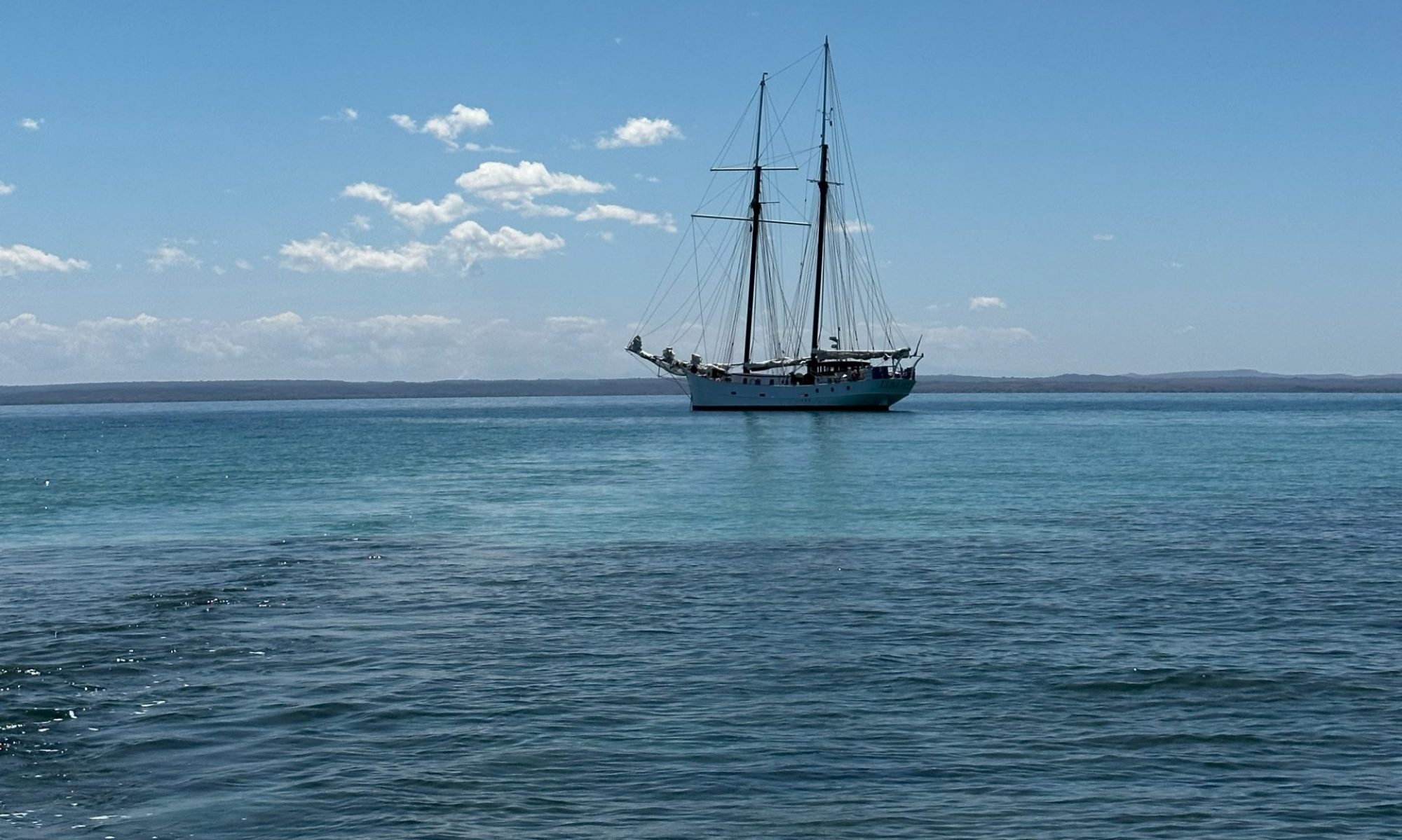While there is a lot of specialist rigging on a gaff rig schooner such as Luna Moon, the following five basic knots are invaluable knots to all yachties.
Each of these has a specific use: Such as when a line can be secured to something else, then we use a ‘Clove Hitch’ or when there needs to be a tie at the end of the line, the Bowline… Read on:
Bowline
Arguably the most well-known (and potentially useful) knot to the sailing world. It is used to create a fixed loop (which won’t run or slip) in the end of a line. The great thing about a bowline knot is that is also relatively easy to untie, regardless of how tight the knot has been pulled. To learn it, newbies are often taught the classic rhyme: The rabbit comes up through the rabbit hole, around the back of the tree trunk, and back down the hole.
Figure of Eight
This is a go-to stopper knot (such as to stop a line from running through a cleat or block). As with the bowline it is known to not seize up no matter how tight its pulled. It is easy to learn and often ‘improved’ by doubling the line.
Reef Knot
So neat and clean, this well known knot’s history is (potentially) as old as sailing, deriving its name from the ‘reef’ in a tall ship’s sails. It is quick to tie and easy to learn and, as a bonus can be undone just as fast.
Clove Hitch
This is a crucial knot for tying things to poles or stanchions. It is made with two successive half-hitches around an object and is most effectively used as a crossing knot.
Sheet Bend
This is a great knot to use when tying together two lines with different diameters.
Join us on board Luna Moon to learn more.






